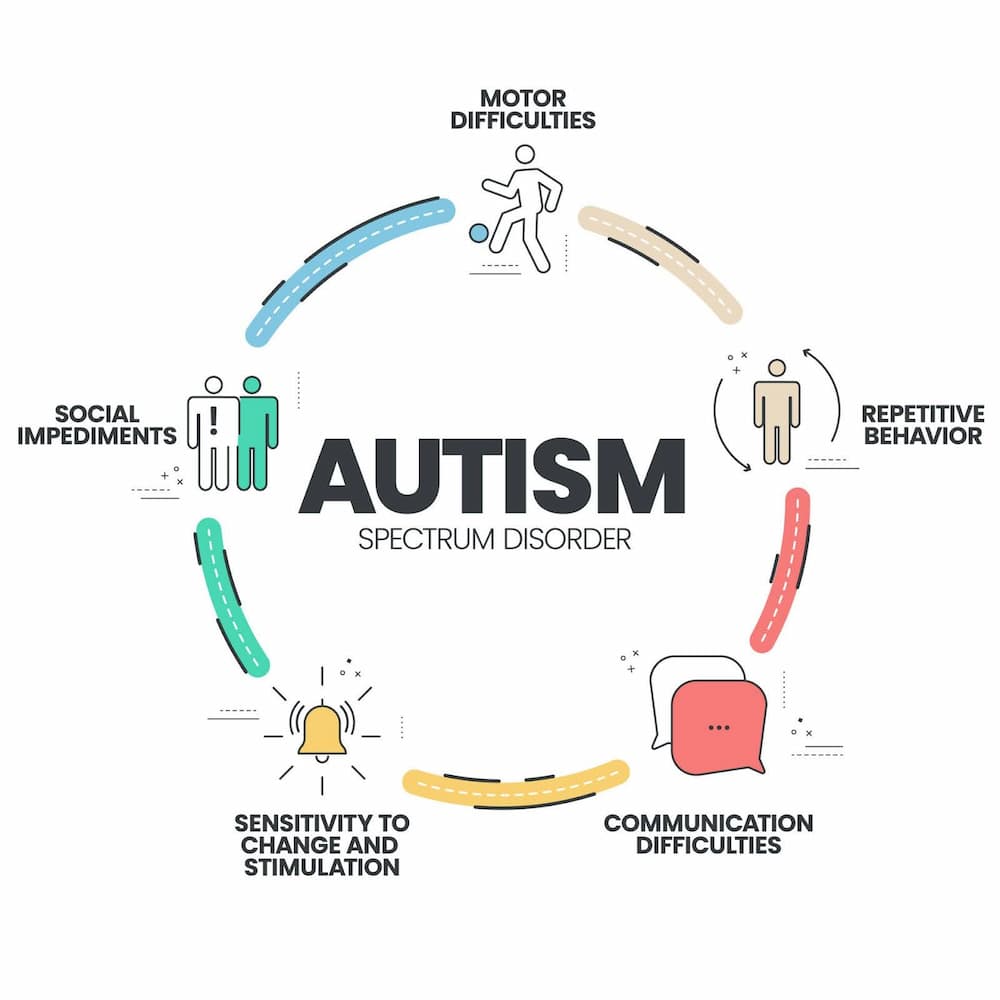Ingenious Therapies and Treatments: Developments in Autism Study
Ingenious Therapies and Treatments: Developments in Autism Study
Blog Article
Understanding Autism: A Comprehensive Overview to Symptoms and indicators
Autism Spectrum Disorder (ASD) includes a wide variety of attributes that can significantly influence an individual's social interactions and day-to-day performance. Recognizing the indications and symptoms, such as difficulties with eye call, social communication problems, and sensory sensitivities, is vital for early treatment. Understanding these nuances not just aids caregivers and instructors in providing appropriate assistance yet likewise promotes an extra inclusive atmosphere for people with ASD. As we explore the complexities of autism, it comes to be important to consider exactly how these indicators manifest in different ways throughout the spectrum and what ramifications they hold for reliable treatment strategies.
Introduction of Autism Range Condition
Specifying Autism Range Condition (ASD) includes recognizing it as an intricate neurodevelopmental problem identified by a variety of obstacles in social communication, interaction, and behavior patterns. The term "spectrum" shows the broad irregularity in signs and symptoms and their severity, which can vary considerably from one individual to an additional. ASD generally manifests in early childhood, although some people might not receive a diagnosis until later on in life.
Aspects influencing the development of ASD consist of ecological variables and hereditary tendencies, although the exact reasons continue to be under investigation. Diagnosis often relies upon behavior evaluations, as there are no conclusive medical tests for ASD. Early treatment is vital and can substantially improve end results, concentrating on enhancing interaction abilities, social interactions, and adaptive habits.
Individuals with ASD might likewise show special staminas, such as remarkable focus to detail or details locations of expertise. Understanding the multifaceted nature of ASD is crucial for promoting a comprehensive atmosphere that suits neurodiversity. Continued research study is important for creating effective treatments and support systems, allowing individuals with ASD to flourish and accomplish their prospective within culture.
Typical Signs of Autism
Acknowledging the usual indications of Autism Range Problem (ASD) is important for very early identification and intervention. These indicators can differ commonly in extent and presentation, however particular qualities are often observed in people with ASD.
One of the most common indicators is a marked problem in maintaining and developing eye call. People may likewise display limited interest in social interactions and reveal a preference for solitary play. Repeated actions, such as hand-flapping, shaking, or spinning items, commonly arise early in childhood. Furthermore, some kids may develop stringent regimens and end up being distressed if these routines are disrupted.
Sensory sensitivities are also common; individuals might panic or underreact to sensory stimuli, such as noises, lights, or structures. autism. Language development can be irregular, with some youngsters showing postponed speech or utilizing language in unusual means, including echolalia-- repeating sentences or expressions listened to somewhere else
It is vital to keep in mind that not every person with ASD will display all these indicators, and the level of these habits can vary dramatically. Early special info recognition permits prompt assistance and resources, boosting the top quality of life for those on the spectrum.
Social Interaction Challenges
Social communication challenges are a hallmark of Autism Range Disorder (ASD), influencing a person's capacity to involve properly with others. These troubles can materialize in different methods, including difficulties in initiating and maintaining discussions, recognizing social signs, and reacting properly in social communications.
Individuals with ASD might fight with nonverbal communication, such as eye get in touch with, faces, and body language. This can lead to misconceptions, as their communicative intent may not be appropriately analyzed by others. Additionally, they might discover it difficult to realize the nuances of tone and context, which are vital for effective interaction.
In group settings, individuals with ASD may feel overwhelmed and might not recognize how to sign up with in conversations (autism). They may likewise exhibit irregular conversational patterns, such as monologuing about specific rate of interests without identifying social reciprocity
Moreover, these difficulties can cause social seclusion or difficulties in developing partnerships, as peers might misinterpret their actions or interaction design. Understanding these social communication difficulties is crucial for fostering helpful atmospheres that advertise social abilities growth and enhance the useful reference quality of communications for people on the autism range.
Sensory Reactions and sensitivities
Lots of individuals with Autism Spectrum Disorder (ASD) experience enhanced sensory level of sensitivities that can significantly influence their day-to-day lives. An individual with ASD may find day-to-day sounds, such as a vacuum cleaner or crowded environments, overwhelmingly distressing, leading to anxiousness or disasters.
Sensory handling distinctions in people with ASD can also influence their capability to take part in social communications and routine tasks. A youngster who is delicate to touch may stand up to physical affection or stay clear of certain apparel fabrics. Alternatively, a choice for certain appearances or preferences can limit dietary alternatives and create obstacles during nourishments.
Recognizing these sensory sensitivities is necessary for recognizing the distinct experiences of people with ASD. Awareness of their sensory profiles can promote far better interaction and assistance strategies, creating an environment that fits their requirements and boosts their top quality of life. Inevitably, recognizing sensory sensitivities is an important part of understanding the more comprehensive range of autism.

Sustaining Individuals With Autism
Efficient assistance for people with Autism Range Condition (ASD) is crucial for improving their total health and fostering self-reliance. Assistance strategies ought to be customized to fulfill the unique needs of each individual, considering their obstacles and strengths.

Social skills training can likewise play a crucial role. autism. Engaging people in group activities or role-playing situations can enhance their ability to browse social communications. Furthermore, it is necessary to inform member of the family, caretakers, and peers concerning ASD to cultivate a encouraging and comprehensive community
Verdict
In conclusion, a detailed understanding of Autism Range Condition is crucial for identifying its indicators and signs and symptoms. Early recognition of usual features, such as social interaction challenges and sensory sensitivities, enables caregivers and instructors to carry out efficient interventions. By fostering improved interaction and social abilities, people with autism can navigate their atmospheres much more successfully. Eventually, enhanced awareness and support can significantly boost the top quality of life for those impacted by ASD.
Autism Spectrum Going Here Problem (ASD) includes a wide array of features that can considerably impact a person's social interactions and everyday performance.Individuals with ASD might have a hard time with nonverbal communication, such as eye call, facial expressions, and body language.Several individuals with Autism Range Disorder (ASD) experience enhanced sensory sensitivities that can dramatically impact their day-to-day lives.Sensory processing distinctions in people with ASD can also impact their ability to engage in routine activities and social communications.Understanding these sensory level of sensitivities is important for identifying the unique experiences of people with ASD.
Report this page